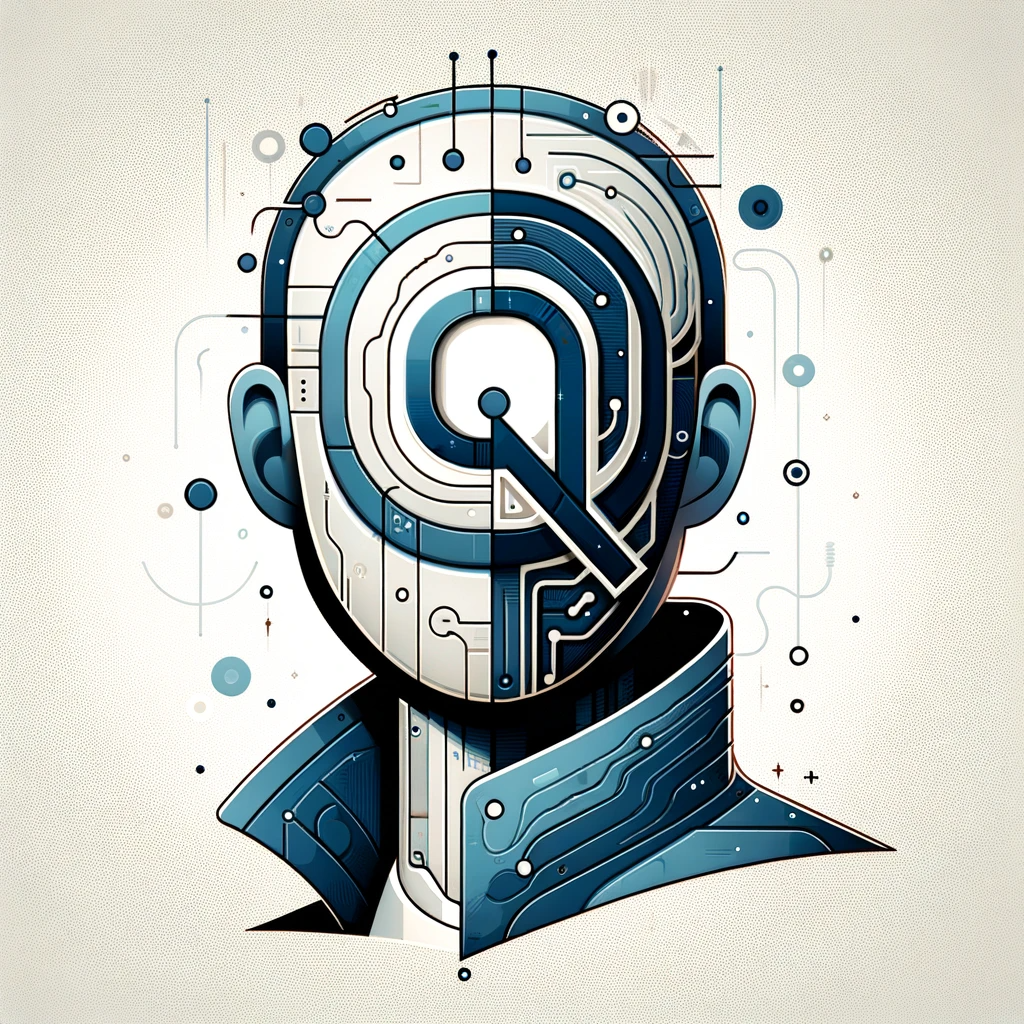Bypass AI Content Detectors: Conquer Content Detection with Expert Methods

Bypassing AI Content Detectors
In today's digital age, the proliferation of AI-generated content has brought to the forefront the need to understand and overcome AI content detection. This section delves into the role of AI in content detection, common methods employed by AI for this purpose, its impact on online content, and the challenges faced in bypassing AI content detectors.
Understanding AI Content Detection
The Role of AI in Content Detection
The rapid advancement of artificial intelligence has led to its widespread integration into various industries, including marketing. Statistical data indicates that the market for AI in marketing is projected to reach a staggering $107.5 billion by 2028, underscoring the pivotal role of AI in shaping modern content strategies.
Common Methods Used by AI for Content Detection
AI-driven content detectors work through sophisticated algorithms designed to analyze and differentiate between human-generated and machine-created content. These methods encompass a wide array of linguistic and semantic analysis techniques aimed at discerning nuances that distinguish human expression from AI-generated content.
Impact of AI Content Detection on Online Content
The growing prevalence of advanced AI models has ushered in an era where personalized and engaging content is prioritized. However, this evolution has also given rise to the need for improved detection methods that can accurately differentiate between human-written text and machine-generated content.
Challenges Faced in Bypassing AI Content Detectors
Publishers face numerous challenges associated with the shift to AI-generated content, particularly concerning the limitations of existing content detectors. Inconsistencies in these tools often lead to false positives and uncertain classifications, making it imperative to develop refined and accurate AI detection removal tools.
Tools for Evading AI Content Detection
Manual Rewriting Techniques
One approach involves manual rewriting techniques that aim to alter word choice, sentence structure, and overall composition. While effective, this method can be time-consuming when dealing with substantial volumes of text.
Paraphrasing Tools
Paraphrasing tools offer a more efficient alternative by automatically rephrasing sentences while retaining the original meaning. These tools utilize advanced algorithms to ensure coherence and readability while evading AI content detection.
WriteHuman: The Ultimate AI Detection Remover
WriteHuman stands out as an exceptional solution designed specifically to eliminate traces of machine-generation from textual content effectively. Its robust capabilities empower users to produce undetectable material with ease.
Utilizing AI Detection Removal Tools
In addition to WriteHuman, there are several other specialized tools available that cater to removing evidence of AI generation from written text. These solutions play a crucial role in ensuring the authenticity and integrity of digital content amidst the pervasive influence of artificial intelligence.
Understanding AI Content Detection
In an era dominated by digital advancements, the creation of undetectable AI content has become a crucial endeavor. By comprehending the methods for bypassing AI content detection, individuals can ensure the seamless integration and dissemination of AI-generated material. This section explores techniques for creating undetectable content, specialized tools designed to remove AI detection, and tips for evading AI detection in writing.
Creating Undetectable AI Content
Altering Word and Sentence Structure
To make AI-generated content undetectable, one effective strategy involves manually editing and rewriting textual material. This meticulous process allows writers to identify errors and plagiarized content, refining the text until it becomes unique, well-written, and engaging.
Using Paraphrasing Tools
Another approach to creating undetectable AI-generated content is through the use of paraphrasing tools. These tools offer a convenient method for rephrasing sentences while retaining the original meaning. By incorporating grammatical modifications and synonyms, writers can effectively transform machine-generated text into human-like compositions.
WriteHuman: The Most Powerful AI Detection Remover
WriteHuman stands as an exemplary solution for producing undetectable AI-generated content effortlessly. With its advanced capabilities, this tool empowers users to eliminate traces of machine-generation from textual material while ensuring authenticity and impact.
Tips for Avoiding AI Detection in Writing
Incorporating manual techniques while adhering to ethical guidelines can help ensure that your content remains undetected by AI systems. Additionally, utilizing specialized tools such as WriteHuman can elevate the quality of AI-generated text to human perfection while protecting privacy and authenticity.
AI Content Detection Removers
Tools Specifically Designed to Remove AI Detection
Several specialized tools have emerged with the specific purpose of removing evidence of AI generation from written text. These tools are tailored to rewrite machine-generated content effectively, allowing writers to bypass AI detection with ease.
WriteHuman: The Ultimate AI Detection Remover
WriteHuman offers unparalleled capabilities in eradicating evidence of machine-generation from textual material. With a simple three-step process, users can bypass AI detection and unlock the full potential of their AI-generated content, ensuring it remains indistinguishable from human-authored text.
Tools for Evading AI Content Detection
As the demand for undetectable AI content continues to rise, ensuring the originality of AI-generated content has become paramount. This section highlights the significance of originality in AI-generated material, techniques for creating authentic content, and the pivotal role of human editors in upholding originality.
Ensuring Originality in AI-Generated Content
Importance of Originality in AI-Generated Content
Maintaining originality in AI-generated content is crucial for upholding brand integrity and engaging with audiences authentically. It also contributes to building trust and credibility, essential elements for sustaining long-term relationships with readers and consumers.
Techniques for Creating Original AI-Generated Content
Utilizing advanced techniques to infuse AI-generated content into human-like language plays a key role in preserving its originality. By incorporating human-like elements, such as emotions and relatable narratives, writers can ensure that their AI-generated content is original and resonates with readers on a deeper level.
The Role of Human Editors in Ensuring Originality
Human editors play a pivotal role in identifying areas where AI-generated content does not match the brand's messaging or fails to reflect its unique voice. Their expertise enables them to refine machine-generated text effectively, ensuring that it remains authentic and aligns seamlessly with the brand's character.
Enhancing Content to Bypass AI Detection
Strategies for Enhancing Content to Avoid AI Detection
Incorporating strategies that go beyond simply bypassing detection involves transforming flagged AI-generated content into undetectable material that mirrors human expression effectively. This approach ensures that the final output remains indistinguishable from human-created text while evading content detectors.
Incorporating Human-Like Elements in AI-Generated Content
Infusing characteristics of natural language into AI-generated content, such as colloquial expressions and varied sentence structures, contributes to creating authentic material that circumvents detection by sophisticated algorithms. By doing so, writers can elevate their content to be virtually undetectable as machine-produced text.
The Impact of Natural Writing Style on AI Detection
The impact of a natural writing style on evading detection cannot be overstated. Text that passes plagiarism detection seamlessly and matches existing online content effectively requires a fusion of creativity and technical precision—a delicate balance achieved through thoughtful manipulation of language.
About the Author: Quthor, powered by Quick Creator, is an AI writer that excels in creating high-quality articles from just a keyword or an idea. Leveraging Quick Creator's cutting-edge writing engine, Quthor efficiently gathers up-to-date facts and data to produce engaging and informative content. The article you're reading? Crafted by Quthor, demonstrating its capability to produce compelling content. Experience the power of AI writing. Try Quick Creator for free at quickcreator.io and start creating with Quthor today!
See Also
Strategies to Avoid AI-Content Detection by Google and Search Rankings
Understanding AI-Generated Content (AIGC) and Its Future
Exploring the AI Revolution in Content Creation: 2024 Trends
Maintaining Ethical AI Content Creation to Prevent Misinformation

